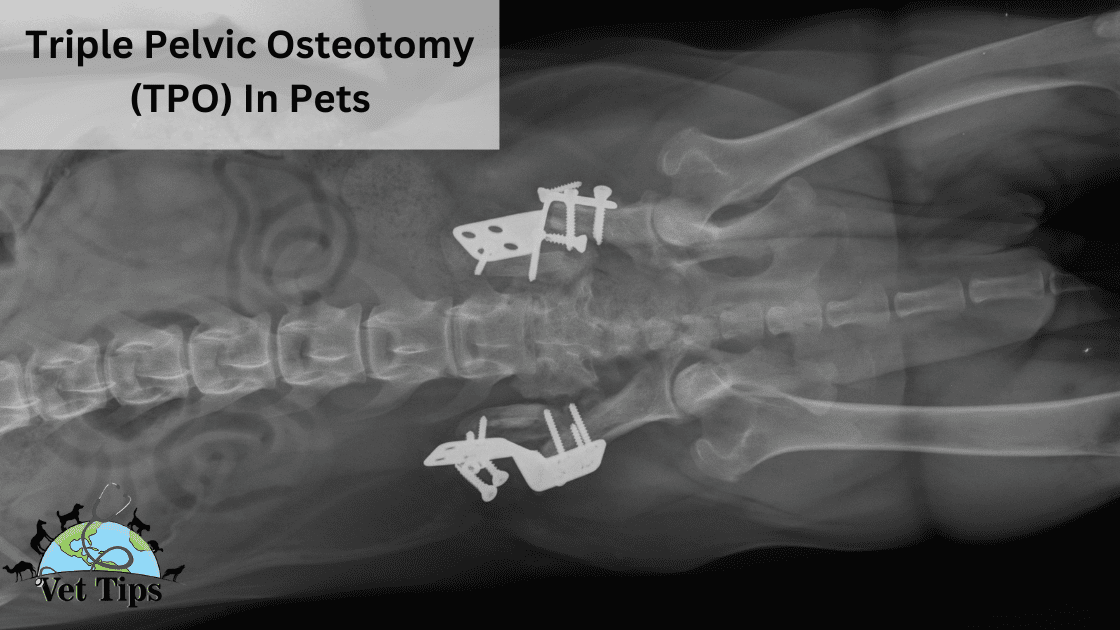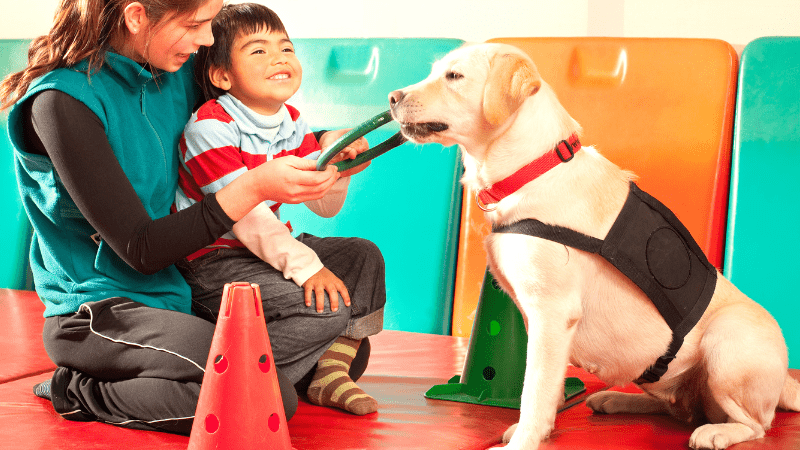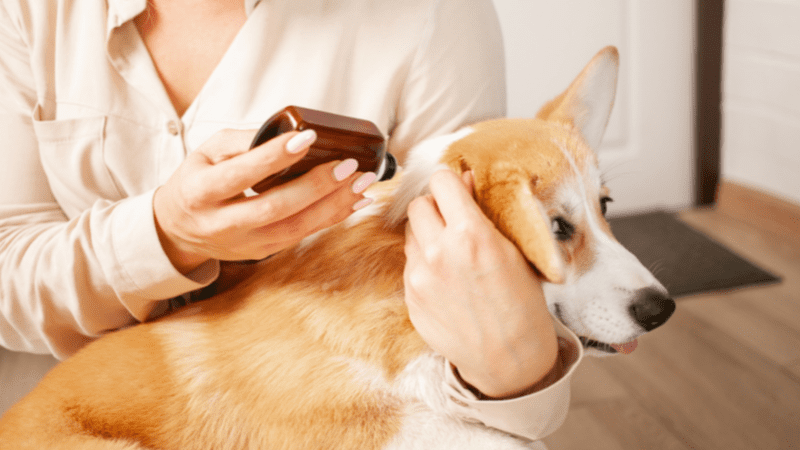In this post, we will discuss all about “Triple Pelvic Osteotomy (TPO) In Pets”. So stick with us to learn everything about TPO in pets (cats & dogs) starting from general information to diagnosis and treatment.
What is Triple Pelvic Osteotomy (TPO) surgery?
TPO is a surgery used to correct or improve the position of your dog’s hip. TPO is usually performed when the acetabulum is either excessively shallow (dysplasia) or does not provide appropriate coverage for the femoral head due to its position inside the pelvis. This surgery is intended to alter the position of the acetabulum in order to create a better-shaped socket for the femoral head to rest in the pelvis and so enhance the alignment of your dog’s hip joint.
The purpose of TPO is to improve joint function in puppies with hip dysplasia while simultaneously reducing instability, discomfort, and the likelihood of future degenerative alterations.
Anatomy of Pelvis
The pelvis is composed of four bones: the ilium, acetabulum, pubis, and ischium. The ilium is the largest of the four bones. Initially, these bones are not fused together in the juvenile animal, but as the pet develops, these bones fused together. The ilium connects the lowest portion of the spine, known as the sacrum, to the rest of the body.
The hip joint comprises a ball (femoral head) located at the end of the femur bone and a socket (acetabulum). This joint is responsible for connecting the hind limb to the pelvis. The joint is kept together by a strong circular ligament (also known as the teres ligament) as well as the joint capsule (which is made of cartilage). A significant amount of support is provided by the muscles that surround and support the hip joint.
A TPO entails making bone incisions in the pelvis in order to allow the socket (acetabulum) part of the joint to be rotated over the ball (femoral head); the bones are then fixed with a bone plate after the procedure.
Usually, the operation would assist in improving the coverage of the ball part of the hip joint. Typically, this operation is done on puppies and dogs less than one year of age. Although the procedure can be performed on both sides simultaneously, typically, each surgery is to be performed four to six weeks apart. An important caveat is that once the presence of arthritis is detected on X-rays, a TPO cannot be done.
What conditions can be treated with Triple Pelvic Osteotomy (TPO) surgery?
Hip dysplasia is often corrected with this surgery. Hip dysplasia (HD) is a disorder in which there is more significant laxity (looseness) of the hip joint than normal hip development. Untreated HD results in the emergence of arthritis (inflammation of joints) in dogs at a young age. The triple pelvic osteotomy (TPO) and juvenile pelvic symphysiodesis (JPS) were two early innovations to address laxity in the pelvis. TPO is often performed on dogs under ten months, whereas JPS is typically conducted on dogs younger than 20 weeks.
What are the potential signs and symptoms of hip dysplasia?
Signs and symptoms of TPO are:
- Reduced activity level
- The bunny hop posture (a type of running in which the dog attempts to keep the hips as still as possible)
- Pain while touching hip
- Loss of thigh muscle mass
- Stride walking
- Alter the normal gait
- Development of osteoarthritis (if this persist)
The following are examples of presenting symptoms for hip diseases:
- Hind limb lameness (abnormal walking, i.e., favoring one leg over the other)
- Trouble getting up
- Inability to jump into the car
- Not using stairs
- Unwillingness to exercise
- Tendency to become extremely tired after exercise and require rest
- When running, dogs frequently bunny-hop or skip
- Tend to be less energetic than their littermates or other family dogs.
Proper Diagnosis
Even though radiographs may be taken at this age, the results may seem normal on the surface unless distraction methods are applied. Traditional advice to wait for hip radiographs until 18 months or two years of age will rule out TPO as a treatment option for HD. By two years of age, the issue will be well established if it is present, and degenerative joint changes will rule out any advantages.
In severe HD cases, pain due to subluxation (a partial separation of the joint) and early DJD (Degenerative Joint Disease) are generally visible between 6 and 12 months of age, while in less severe cases, pain may not become evident for up to 2 years of age. By waiting until clinical symptoms of hip dysplasia appear, the signs of DJD will have already begun, and the advantages of the TPO will have been significantly diminished compared to the earlier diagnosis.
Any dog who is suffering from TPO, walks with the characteristic “sailor’s gait” of rolling hind limbs, is reluctant to exercise normally, becomes lame after exercise, or shows pain when getting up or down, jumping into cars, or going upstairs should have a thorough clinical orthopedic examination including hip palpation under general anesthesia and distraction hip radiography.
The radiological appearance of hip dysplasia, on the other hand, is not always abnormal, and sometimes your vet can only detect the existence of hip dysplasia by palpable subluxation of the hip joint alone.
When the Ortolani technique is performed appropriately, it can provide your vet with information about the angle of subluxation and relocation as well as the depth of the acetabulum in the hip joint.
Many dogs with completely subluxed hips (separation of joints) can be improved if the surgery is performed. In contrast, the dog is young enough, and there are no degenerative joint abnormalities present. When initial radiographs reveal a significant degree of subluxation in conjunction with degenerative joint changes, it is possible that your dog will not benefit from a TPO, and your vet might recommend a total hip replacement instead.
How does TPO work?
After TPO femoral head is fixed deeper into the acetabulum t improve the alignment of the hip joint. During the early stages of development, the bones are still flexible enough to allow for remodeling; the acetabulum deepens due to the increased weight-bearing pressure from the femoral head. Due to these pressures and the fact that it is not continuously sliding in and out of the acetabulum when the dog walks, the femoral head grows more regularly. If the procedure is performed at the appropriate time, hip dysplasia can be prevented or minimized. The degenerative changes associated with hip dysplasia are caused by continuous laxity of the hip joint—many of the canines that have been operated on lead pretty regular lives. Since hip dysplasia is a hereditary illness, dogs with this condition should not be used for breeding.
What could go wrong?
Though highly unusual, damage to the obturator and sciatic nerves can happen during TPO. The other possible risks include failure of the implants to hold in the fragile, immature bone or infection of the surgical site following the procedure. These problems are also uncommon and can be avoided by keeping the dog cratered, wearing a cone, and property using antibiotics.
What type of TPO plates are used in TPO surgery?
There are many different TPO plate brands to choose from:
- Swiss company Mathys produces a TPO plate that is based on a standard DCP bone plate but with a 45-degree twist to the plate. They are available in four different sizes as well as left and right angles.
- The most often used plate is manufactured by Slocum Enterprises (USA), and it is available at three angles: 40 degrees, 30 degrees, and 20 degrees, as well as on the left and right sides of the plate. A French firm has recently developed a TPO plate of a similar design. Slocum has presented mathematical proof that the plate he has designed is 27 percent more resistant to torsional bending than a 1 cm Mathys plate in terms of torsional bending.
- Recently, a TPO plate with eight holes can be adjusted (Stealth, Robert L. Rooks) has been introduced. Some researchers believe that the TPO method should be avoided when plates with high degrees of rotation are necessary. Because the acetabulum rotates at an angle greater than 90 degrees, there is a greater risk of interference between the femoral neck and the dorsal acetabular rim when this angle is more than 90 degrees. The risk of ventral hip luxation is also raised in this circumstance. Even though the optimum angle of this TPO plate appears to be 20 degrees, but 30 and 40-degree plates were also used with some effectiveness in severe cases of subluxation, and each case must be evaluated on its own merits.
What is the process of performing a TPO?
The surgical technique, which is thoroughly documented in most current manuals and journals, entails three pelvic osteotomies, one at the pubis, one at the ischium, and one at the shaft of the ilium. The ischium, pubis, and the shaft of the ilium are the sites of the osteotomies. Even though the surgical methods are not challenging, numerous measures must be taken to protect the sciatic nerve and the obturator nerve when the osteotomy is performed.
Cost of Triple Pelvic Osteotomy (TPO) surgery
TPO can cost up to 1500 to 3000 USD. However, the price varies depending on the condition, hospital, breed, and veterinary surgeon expertise.
Surgical Alternatives to Triple Pelvic Osteotomy (TPO) surgery
Surgical alternatives to TPO are:
- Total Hip Replacement: (Best option when TPO do not work. In THP, the damaged bone and cartilage is removed and replaced with prosthetic components)
- Juvenile pubic symphysiodesis: (Best when dog age is less than 20 weeks because the ileum ischium and pubis did not fuse at that age)
- DARthroplasty: ( Best when the owner did not want to go for THR. In this procedure, autogenous bone grafts from the iliumare collected and placed over the deficient dorsal acetabular rim)
- Denervation of the dorsal acetabular rim: (Best when there is severe pain to elevate the pain it is used to desynthesize the whole nerve)
- BOP shelf arthroplasty: (Not applicable now, but it was used in the past as a TPO alternative)
What are non-surgical alternatives to TPO?
While a surgical approach is needed to fix the structural issues in the hip, there are many alternatives therapies your vet can recommend for your dog, such as:
- Neutraceuticals:Glucosamine and chondroitin. They can be administered as a tablet or as an injection directly into the joint, but they take a long time to begin to exert their effects. Feeding raw meat, particularly tracheas and other cartilage (such as knees and chicken feet), is an excellent way to supply these nutrients to your animals. Feeding raw is also a fantastic approach to increase the appetite of a dog who is no longer interested in eating dry commercial food.
- MSM:This is an anti-inflammatory medication, which is another option that may be effective around half of the time. It takes time to work; thus, it should be tried for at least two to three months before giving up completely.
- Vitamin C and E: Both vitamins help reduce inflammation in the joint and are beneficial in reducing cartilage degeneration. High dosages of the vitamin can improve collagen quality and protect the joints. Combining vitamin E and vitamin C may help reduce joint inflammation and protect the joint.
- Fatty Acids:Fatty acids have anti-oxidant characteristics, which help to relieve inflammation in the joints. Alternatively, you can feed fresh salmon twice a day, which is available for purchase commercially.
- Herbs:There are a variety of herbal treatments available such as:
- Alfalfa
- Cayenne
- Dandelion
- Licorice
- Gingko
- Johns Wor
- Colostrum:Colostrum (the first milk produced after birth) is also an alternative because it contains minerals and other nutrients that the dog may lack. Colostrum is most commonly used in conjunction with herbal remedies.
- Massage: There are several effective massage therapies available, and in some places, a veterinary massage therapist can help reduce the dog’s stiffness. If you use an essential oil during the massage, it may be more beneficial.
- Acupressure:This technique can be performed at home and may provide some pain relief.
- Acupuncture:This technique can release pain in limbs and joints.
Advantages and disadvantages of TPO
Advantages:
- Provide relief to dogs.
- Able to walk, sit and stand properly
- Long term solution
Disadvantages
- Costly
- If post-operative care is not given correctly, another minor surgery may require.
- A long interval of healing as compared to juvenile pelvic symphysiodesis.
What is post-op recovery?
Following the operation, your dog will be admitted to the hospital for about two nights. At least six to eight weeks of strict house rest are necessary following the process. X-rays are taken around six weeks after the procedure to verify the surgical site’s healing.
Medications:
For the first 10-14 days following surgery, pain medication is usually all that is needed for comfort. Give pain medicine only as directed by your veterinarian, and never provide human medications without first checking with a veterinarian.
Exercise:
Because the bones are still malleable in young dogs, vigorous activity may cause the screws to come loose and the bones to become misaligned. To avoid injury, you should keep your dog’s activity strictly limited to a crate or kennel with firm ground. Following surgery, exercise should be limited to short walks with a leash and a towel to support or harness the knee for the first six weeks following surgery. Do not allow your pet to run, leap, or interact with other animals.
Recommended Follow-up:
Please make an appointment with your vet for suture removal within 7 to 10 days of your procedure. To evaluate the healing of the pelvis, a follow-up examination should be performed roughly one month after the surgery. If you see any swelling or drainage from the incisions or any increase in lameness, please call your vet right once.
Possible risks and complications
This operation, while not inherently dangerous, does involve some degree of discomfort and has a modest risk of consequences. Common complications include the loosening or breaking of the surgical screws. This problem is the most common in big male pups who were very active in the first two months after surgery. A second operation is usually unnecessary to correct this problem, although tight confinement is required until the pelvic bones have recovered. Due to numerous major nerves and blood arteries in the operative region, there is a very slight possibility of nerve injury or hemorrhaging during surgery. However, by choosing an experienced board-certified surgeon, these risks are greatly reduced.
The primary reason for doing this surgical operation is to treat the joint instability found in young dogs with hip dysplasia in order to avoid the development of degenerative joint abnormalities that would otherwise result in life-long discomfort and loss of mobility in the future. Currently, this technique is only successful in dogs that do not have substantial remodeling or arthritic changes and who have mild to moderate joint laxity. Typically, only patients between the ages of 5 months and about 12 months satisfy these requirements. A modest risk of complications is associated with this procedure, which is considered to be moderately invasive.
Any patient undergoing this surgery should be spayed or neutered, both because the alteration in the form of the pelvis might interfere with a female’s capacity to give birth and because hip dysplasia is a hereditary disease that is likely to be passed down down the generations. It is difficult to predict which puppies with hip joint laxity would grow on to develop clinical hip dysplasia and, as a result, would benefit from this surgery. As a result, there is a possibility that some patients who have this treatment will turn out not to have required it in the first place. In dogs with symptoms of hip joint laxity, there is currently no practical technique to forecast the progression of symptomatic hip dysplasia. This is especially true in puppies with signs of hip joint laxity.
Prognosis following Triple Pelvic Osteotomy (TPO) surgery
This surgery provides a very good to an excellent outcome for patients under 12 months old who have mild to moderate hip joint laxity and who lack any signs of degenerative changes. Older patients, those with severe laxity, and those that already have degenerative joint changes are less likely to experience the intended benefit of this procedure.
What breeds of dogs are suitable candidates for this TPO?
Candidates for triple pelvic osteotomy (TPO) include dogs weighing more than 30 pounds and older than five months of age; however, they are rarely older than one year. When X-rays reveal hip looseness but no indication of arthritis, the TPO is typically a very excellent option for treating the condition. It is necessary to perform a sedation examination in addition to the X-rays in order to evaluate the degree of looseness and to identify the degree of correction that would be required with surgical intervention.
What if my dog isn’t a good candidate for TPO?
Fortunately, complete hip replacement is an effective treatment option for hip dysplasia if your dog is not a good candidate for TPO. In addition, it relieves discomfort and restores the natural function of the hip joint.
Final Thoughts:
A young dog with hip dysplasia may require a triple pelvic osteotomy. Candidates for this surgery should be less than ten months of age, have minimum to no arthritis, and have a clear positive Ortolani sign. Lameness generally disappears in approximately 2-3 months following surgery. The success rate for this surgery is about 92%.
Tell us in the comments, how you like our article “Triple Pelvic Osteotomy (TPO) In Pets“
For similar posts like this, click here.
For the source file, click here.









One thought on “Triple Pelvic Osteotomy (TPO) In Pets”